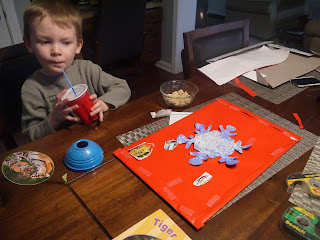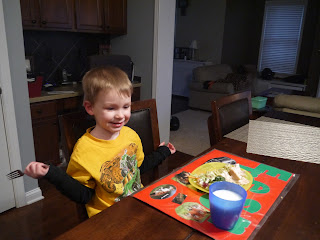The Quest for the Perfect Book
Reading is a chance for your child to dig deeper into
topics that he loves. It is a chance for
her to explore situations and concepts that interest her. Writing is an art, and reading is a very
personal journey. In order to encourage
a love of reading you must make sure that you allow your child to take a role
in which books he or she reads. The
perfect book will be one that is both interesting to your child, and within his
reading range. Here are a few tips for
helping to assist your child in finding his perfect fit book.
Understand your Child’s Reading Level as a Guide
Reading levels can be useful in giving us an idea of how
to steer a child when she is searching for a book. Even though my children are at an age where
reading levels have not yet been assigned, I still use the guidelines for
infants and toddlers as a starting point.
For example, I know that babies typically enjoy books with simple bright
pictures and toddlers learn reading skills from books that rhyme. If you have an older child who has been given
a book list or a reading level, it would be useful to skim through some
suggested books at his or her level to get an understanding of the types of
books your child should be able to handle.
Understanding your child’s suggested book level should be one piece of
helping him to select books.
Be Flexible!
Try not to get too confined with books that only fall
within your child’s reading level. While
I include rhyming books in my 3 year-old’s book diet, we read mostly monster
truck and Curious George books, because that is what interests him and makes
him fall in love with reading. I
understand that this gets trickier with older kids, as they are mostly reading
on their own. However, I’ve noticed that
some readers, who usually struggle, can soar through a book that captivates
them. If your child has picked a book
that you think may be too difficult for him, try reading it with him for a few
nights to see if he is grasping it.
It
can also be quite beneficial to read aloud to an older child. Audiobooks are another option for letting a
child gain access to a book that is outside of his or her reading level. I suggest checking out the book in print as
well, so that your child can follow along in the text as he or she listens to
the story. You do want to make sure that
your child is doing some reading on his or her own, but mixing in oral reading
and audiobooks can liven up the routine from time to time.
If
you have a child who is consistently picking books that are too easy for her,
I would suggest using some of the other tips that I provide her to try to
gently nudge her into a higher-level book.
It is also a good idea to explain to her that it is important to you
that she grow as a reader, and that in order for her to do that, she is going
to have to choose more challenging books. I find it acceptable for my higher
level readers to chose some books that may be below level, but it is important
to their growth that they are usually picking books that are at their reading
level.
Check out a Varied Collection of Books
You will never see me leaving the library with only
one book in hand. When visiting the library,
I suggest choosing 5-15 books to check out.
Then if your child isn’t connecting with one of his choices, he has
other books to choose from without making a big trek back to the library. Depending on how much time you have at the
library, it can be very difficult to make the perfect choice while you’re
there.
If your child hasn’t yet connected with a certain genre
of reading, you should also consider checking out a variety of print
materials. As a young reader, I found
magazines much more fun to read than books.
When I visit the library with my boys now we check out fiction,
non-fiction, magazines, audiobooks, and songbooks. Sometimes I’m shocked at which books my son
requests over and over again and which ones get ignored.
Get Acquainted with your Library’s Special Features
While the library is a very healthy place to take a young
child, sometimes it can turn into a nightmare.
I remember avoiding the library with my son when he was 18 months to 2
and a half. He would run away from me,
and pull books of shelves. It was very
frustrating, and a little embarrassing.
That was the age where I learned how to use the holding features at my
library. I would go online, choose all
the books that I wanted, put them on hold, and then pick them up at the front
of the library after work. This was an
absolute dream come true!
Even
though my son is past that fun little stage, I still use the hold function at
my library. That way, I know that I’ve
preselected some books that meet my sons interests and listening level and it
takes the pressure off when we’re at the library. I always let him select about 3-5 additional
books, but if they are the total wrong fit for him, I’ve got a back up plan.
Another
great feature of our library is that you can download e-books and audiobooks
directly to your own devices. Both of
these processes have been tricky for me the first time, but they are wonderful
after you take the time to decipher how to use them. Reading a book on a mobile device can be very
exciting and engaging for a young reader.
Finally,
most libraries offer a variety of excellent programs for kids. I remember the excitement of doing the summer
reading program myself, and our library’s summer reading program begins with
infants. Taking advantage of these
programs can help your child build positive connotations with the library, and
you may even find a program that looks interesting for yourself.
Look for Popular Authors and Series
Aside from the fact that it is exciting to be able to
be a part of the book buzz that everyone is talking about, checking out books
by popular authors or from a series will make selecting the next book much
easier. A child who knows a series he
enjoys can easily go straight to that section and choose the next book. Another benefit to choosing well known books
is that librarians, teachers, and your child’s peers will be more likely to be
familiar with the type of book and they will have an easier time making
suggestions of other books that might interest your child.
Let the Quest Begin!
Reading shouldn’t be painful. Keep in mind that our ultimate goal with
young readers is to make them comfortable with a variety of reading and turn
them into life long readers. Sometimes
helping a child to connect with a book can be a much more challenging task than
we first realize. However, once you see
your child truly fall in love with a book, it will all be worth it.














